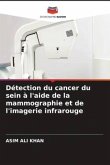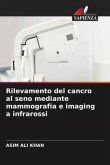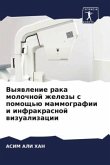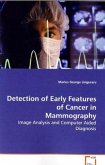Breast cancer has been ranked the number one cancer among Indian females with rates as high as 25.8 per 1, 00, 000 women and a mortality rate of 12.7 among 1, 00, 000. Breast cancer is the most occurring among all cancers in women in the world, and is the main cause of death due to cancer worldwide. The early detection of breast cancer can increase the survival chances considerably. Mammography is a well-established modality for the early detection of breast cancer. However, there are interpretational failures on the part of the radiologists to read the mammograms, and there are inter and intra observational differences between them. In quest for high accuracy, this work aims to develop an automated Computer Aided Diagnostic (CAD) system which detects the malignant masses from the mammograms. Mammography is commonly used as a breast cancer screening tool as it can detect any anatomical change in cancerous breast in the form of presence of masses or microcalcifications. Thermography has been tried for the early detection of breast cancer in recent times.








